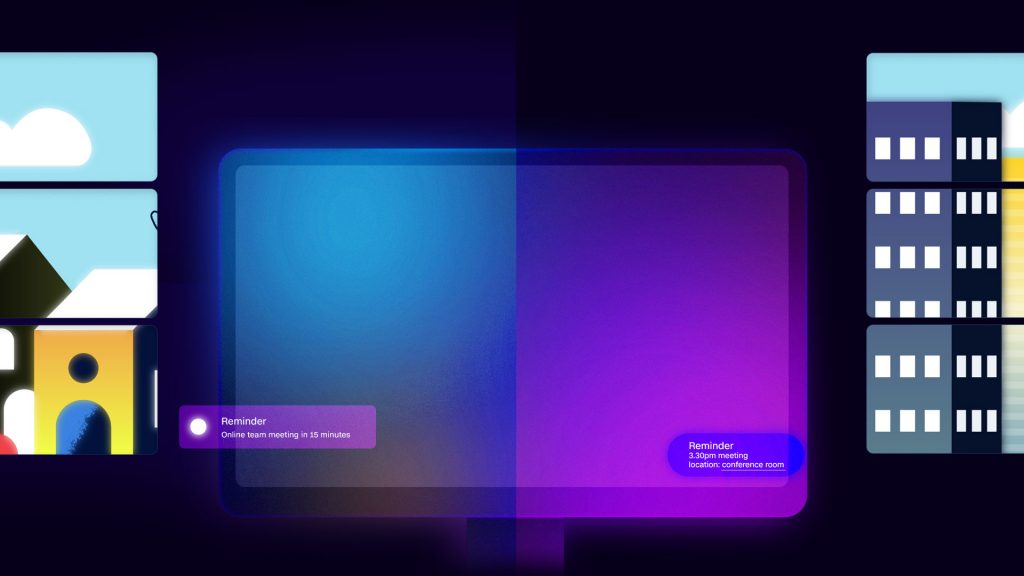
Talent management revisited
Redefining recruitment, productivity, and culture
As business leaders navigate the future of work, the challenge now lies in maintaining the sense of communication, community, and culture that their employees have come to expect.
The way we define the workplace is no longer limited to the office or the home. As a constantly evolving concept, it’s not a fixed entity at all. It is wherever people are working their best.
With a dispersed workforce comes new challenges, especially around talent management and the changing needs of their employees. The decisions that business leaders make now could be the difference between engagement and resignation. And the numbers confirm this cultural shift: 64% of people agree that working from anywhere versus coming into the office directly affects whether to stay in or leave a job.
Employers need to consider how this hybrid approach to work will impact everything from talent recruitment to development, workplace inclusivity to productivity. They also need to understand the role of technology in adapting these practices for both a physical and digital environment.
64% of people agree that where they work directly affects whether to stay in or leave a job.
Future of Technology, a survey by Cisco

Broadening the talent search
“As little as two years ago, the predominant employment pool that anybody had available to them was within a 15-mile radius of their office,” explains Vaughan Klein, Senior Director of Collaboration EMEAR at Cisco. But when your team isn’t anchored to one building, the world becomes your talent pool.
Cisco made the most of global talent during the disruption of Covid-19. In March 2020, its user base rose by x4 its pre-pandemic value, and again by 0.28 billion attendees between then and March 2021. To manage this influx, the Collaboration team recruited over 150 workers from around the world, based on skill alone.
Without geographical limitations, a business can “free [itself] up to anything in relation to diversity” and focus solely on “the person that can conduct the task,” says Klein. As companies shape their own recruitment processes around this philosophy, 86% anticipate they will expand their hiring criteria for job candidates in the next two years.

Getting sticky with it
A global workforce “will only work if you also have a hybrid infrastructure in place, and the practices, cultures, and rituals to create stickiness,” says Stefan Bachmann, Director of Talent Acquisition EMEAR at Cisco. “Bringing people in is one thing, but making people want to stay is very different.”
The secret to creating this “stickiness” lies partly in collaboration tools, like Webex by Cisco. They break down the barriers between location, time zone, and language so a business can focus on creating a seamless working environment – something that the American pharmaceutical and biotechnology company, Pfizer, experienced first-hand.
In an article for the Harvard Business Review, Albert Bourla, CEO of Pfizer, revealed how his team developed a Covid-19 vaccine in record time with the help of Webex. Thanks to video conferencing and voice intelligence technologies, Bourla was able to communicate with his project groups in the US and Germany at every stage of the clinical trial process. It was this real-time collaboration that enabled Pfizer to roll out a safe vaccine in less than eight months, even under the scrutiny of the world.

Balancing productivity levels
In Pfizer’s case, productivity could be measured by outcome. However, for businesses that aren’t task-based, how can leaders learn from the working habits of their remote employees, without the transparency that the office provides?
“It starts with listening to your employees,” says Scott Dust, Ph.D., Professor of Management at the Miami University’s Farmer School of Business in a post for Psychology Today. “Engagement is a motivational construct. It has little to do with whether people show up to work physically and everything to do with how people show up to work psychologically.” People managers need to understand what motivates an individual before they build an action plan around their needs.
Productivity also means knowing when to shut off. As Klein suggests, remote workers tend to overcompensate when they’re not in the office. “One more thing” and an always-on mindset blurs the line between working hours and free time.
Business leaders can introduce self-analytic tools, like Collaboration Insights from Webex, to avoid burnout. Employees get a private overview of how they work – if they’re scheduling enough breaks and if they’re disconnecting at an appropriate time. It’s up to the individual to adjust their work-life balance, but knowing they have the support of the business will help to empower personal wellbeing and stronger working relationships.
Engagement has little to do with whether people show up to work physically and everything to do with how people show up to work psychologically.
Scott Dust, Ph.D., Professor of Management at the Miami University’s Farmer School of Business

Maintaining workplace culture
When it comes to creating a talent strategy that supports both an office and remote environment, it often means tailoring solutions to employee preference which, according to a Deloitte study, 68% of executives intend to do. People have grown accustomed to being the architects of their own working models and so, “organizations should first seek to understand where and how their employees want to work,” explains Dust.
It also means creating a cohesive experience that people want to be a part of. In other words, the physical office shouldn’t work against its digital alternative; the two entities should work as one.
For instance, while the office offers employees a social currency through in-person interactions, digital technologies can facilitate spontaneous group meetings through dedicated team spaces. And while meeting rooms encourage serendipitous moments of creativity, cloud solutions can make sure these creative ideas live on in a secure environment.
Essentially, wherever gaps appear in one space, the other should work as a bridge to improve the entire business model. Getting this right will allow leaders to build a hybrid infrastructure that works for their organization and the individuals they employ.
Read more



